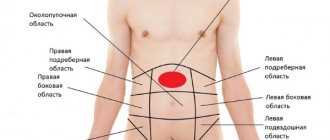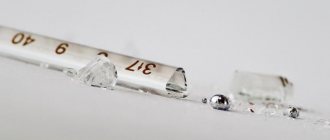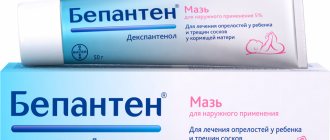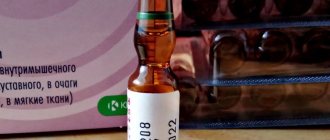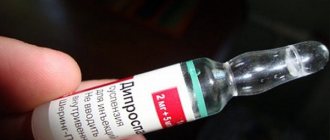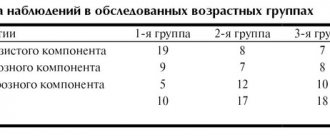Dysport: when does the effect occur?
It is worth warning right away that Dysport and Botox are drugs that do not have an immediate desired effect, but a long-lasting one.
This is why we value them. Although you will see the first changes within a few hours. To understand why this happens, let’s find out together what Dysport is, how long it takes to see the effect, and why injections with Botox and Dysport should only be done in trusted clinics and qualified specialists. Several decades ago, botulinum toxin, which is the basis of Dysport, had interesting side effects. Doctors noticed that in small quantities the substance “freezes” the muscles, and simply paralyzes them. Changes in muscle fibers lead to the fact that the skin becomes smooth, effectively stretched, wrinkles quickly disappear as they are smoothed out, and the face itself pleasantly relaxes. Previously, the properties of botulinum toxin were used to work with muscle tone, correct cosmetic defects, and also to combat excessive sweating in the armpits, feet and palms.
In cosmetology and aesthetic medicine, they began to use a version of the toxin that has undergone a special purification technique. We are accustomed to thinking of toxins as poisons, but in minimal quantities and with the use of certain components, such poisons become wonderful tools for wonderful transformations. This is how the drugs Botox and Dysport appeared. The effect of both was quickly appreciated by women who actively care for themselves and strive to restore youth to their skin or maintain it for as long as possible. Many of them breathed a sigh of relief, because everyone is thinking about being young and charming for as long as possible without plastic surgery.
Indications for the drug Dysport®
- blepharospasm, hemifacial spasm, spasmodic torticollis, spasticity of the arm muscles after a stroke, hyperkinetic folds (expression wrinkles) of the face in adults;
- dynamic foot deformity caused by spasticity in cerebral palsy in children aged 2 years and older;
- hyperhidrosis of the axillary region.
| ICD-10 code | Indication |
| G24.3 | Spasmodic torticollis |
| G24.5 | Blepharospasm |
| G80 | Cerebral paralysis |
| R25.2 | Cramp and spasm |
| R61 | Hyperhidrosis |
Wide range of compositions. What to choose?
Before releasing the drugs to the wide market, specialists meticulously tested Botox and Dysport. How long the effect lasts and how it occurs became clear after a detailed study of the properties of botulinum toxin and analysis of the results. True, this took more than one year. The history of compositions, the search for ideal components, testing side effects and the effect on different skin types - the toxin has come a long way to turn from a nerve poison into the main trump card of modern cosmetology (it is no coincidence that during the Second World War it was even considered a component of bacteriological weapons).
Dysport and Botox have many analogues. For example, Lantox and Xeomin. They are based on botulinum toxin type A (there is also B). They affect the release of acetylcholine in our body, significantly slowing down and reducing this process. This is an organic compound that is responsible for neuromuscular activity. In fact, this is the main answer to the question why Botox and Dysport became popular and how long the effect lasts.
Make an appointment at the clinic on Vasilyevsky Island
Sign up
Why we recommend Dysport
In fact, both drugs have their advantages and their admirers. Who decides which composition is right for you?
Much has already been studied and written about the difference between Botox and Dysport. The effect is similar. The first drug is produced by an American company, the second is produced by a French company (made in France and the UK). Dysport contains lactose, and Botox contains sodium chloride. Dysport contains less botulinum toxin. Additional substances are auxiliary components, like human albumin. To give you an idea, Lantox is the result of the work of the Chinese and Germans. According to experts, they give results that last less than the duration of exposure.
How is the procedure done?
First, the doctor determines the areas where Dysport will be injected. If you need to remove wrinkles, the doctor will ask you to tense the desired muscle (squint your eyes, wrinkle your forehead). If the drug is needed to treat excessive sweating, then the procedure itself is preceded by a test with iodine and starch. This determines the area of greatest activity of the sweat glands.
The selected zones are marked with dots - injections will be made there. The injections are made with the thinnest needles, so they are usually easily tolerated by patients. But if necessary and at the request of patients, injection sites can be treated with anesthetic cream.
"Dysport" - anti-wrinkle injections
If you want smooth skin without age or expression wrinkles for a long time, a cosmetologist may advise you to choose Dysport. The effect of the composition, unlike Botox injections, is characterized by a large area. This means that one injection will demonstrate results not only in the wrinkle where the injection was made, but also in the area surrounding it. They say about Botox that it has a targeted effect, this is neither a plus nor a minus, it’s just that everything is decided individually and at will. In addition, a qualified specialist will determine how many injections of Dysport or Botox you will need and calculate the dosage so as to achieve the maximum result you need.
Corrections with Dysport are used to influence different areas of the face and body. Most often, a series of injections with botulinum toxin is used for the following areas:
- in the upper part of the face (injections in the forehead against wrinkles with Dysport perfectly “smooth out” horizontal wrinkles);
- to the area between the eyebrows (vertical folds, which often form when we frown, are leveled and disappear);
- in the area of the corners of the eyes (where “positive” wrinkles appear from smiles and good mood);
- to change the inclination of the corners of the lips (using the action of the toxin, it is possible to lift them higher, since the composition fixes the muscles and keeps them in good shape; it is believed that after injections with Dysport, a positive facial expression is created, because in a relaxed state, the corners of the lips are “sadly” lowered);
- for tightening the neck and armpits (in these places, age-related changes can rarely be removed using preventive methods, but Dysport does an excellent job);
- around the nose – correct diagonal wrinkles, nasolabial folds and pronounced folds on the bridge of the nose;
- in the cheek area you can tighten your cheekbones.
Surely, you still have questions about the features of the drug. Rest assured that Dysport is a product of natural animal origin. For injections, a very weak concentration is used, the safety of which has been confirmed in many countries.
The effect after Dysport is characterized by good stability. This sets it apart, for example, from smoothing serums and simple tightening masks, which in most cases last only a few hours. The drug easily removes the so-called “crow’s feet”, since these are shallow wrinkles by nature, and has a productive effect on horizontal and vertical folds on the skin. It is important to remember that the toxin is weakened and purified, so it becomes a drug. At the same time, all over the world, injections with Botox, including Dysport, are called not just life-giving injections, but also “injections of youth.” This is exactly the comparison you will hear about Dysport, about how long it takes to see the effect, in reviews. Fast and productive!
So, the main question: on what day does the effect of Dysport appear and how long does it last?
The amazing anti-aging result that we so strive for appears within just a few days. Effective changes can last up to 5-7 months. Then the series of manipulations can be repeated. Dysport does not provoke addiction or muscle atrophy. Muscle reflexes and muscle activity, if you do not inject the drug again, are restored over time. At the same time, the skin has time to renew itself, wrinkles become fewer, and the entire oval of the face is tightened. This is because while the toxin is working under your skin, you get into the habit of not wincing or frowning. And this is the most important effect after Dysport. This means that in the near future you will be free from the appearance of new wrinkles. By the way, for the future, keep in mind that excessive facial emotionality and facial expressions can cause headaches and migraines. So muscle relaxation is a chance to get rid of these unpleasant ailments.
At the follow-up meeting, the cosmetologist will check how Dysport “works” in your case. When the effect comes, you will already be thinking about the next transformation. For the first course, only 2-3 sessions of procedures are recommended, injections are made in different areas determined during the consultation. It is important that the drug that the clinic recommended to you is certified, has an individual serial number and a valid expiration date.
Rules for preparing solution for injection
Remove the protective plastic tamper evident cap from the bottle.
When diluting the drug, do not open the bottle by removing the stopper. Immediately before diluting the contents of the bottle, the central part of the stopper should be treated with alcohol. The lyophilisate is diluted by introducing a regulated volume of 0.9% sodium chloride solution for injection into the bottle by piercing the stopper with a sterile needle of size 23 or 25. The resulting solution is a colorless transparent liquid. Since the drug does not contain a preservative, it is recommended to use it immediately after dissolution. The diluted drug can be stored for no more than 8 hours at a temperature of 2° to 8°C.
Rules for processing tools and waste disposal
Immediately after the injection, the remaining solution in the vial or syringe should be inactivated with a dilute sodium hypochlorite solution containing 1% active chlorine. All ancillary materials that have come into contact with the drug should be disposed of in accordance with standard hospital practice.
Spilled medication should be removed with an absorbent cloth soaked in 1% sodium hypochlorite solution.
About the nuances of the procedure
We have already written that Dysport does not act on the surface of the skin, but on its internal capabilities and facial muscles. Therefore, the effect of Dysport is aimed at tense facial muscles, blocking them with brain signals. Despite the targeted use of the toxin, injections with this substance have certain contraindications. The cosmetologist raises this topic during the first visit. You must understand that there are cases when it is undesirable to do such manipulations. Injections with botulinum toxin are not recommended:
- before the age of 12; up to 18 years of age they are possible for medical reasons if it is necessary to remove an aesthetic defect;
- Since we are talking about Dysport injections as a rejuvenating procedure, the main category of patients who come to us on this issue are women over 30 years old; Of course, exceptions are possible;
- during pregnancy (it has been proven that the components can harm the baby);
- during breastfeeding, as the substance may pass into milk;
- in the presence of pathologies and ailments that are associated with blood clotting;
- during exacerbation of chronic diseases;
- for diseases of the nervous system;
- if there are inflammatory processes in the body, especially in the intended injection area;
- oncological diseases
- during a course of taking antibiotics, antiplatelet agents, anticoagulants (the prohibition is associated with the general weakening of the body at this moment).
The cosmetologist is obliged to check you for individual intolerance to the drug. If it is, then under no circumstances should you receive injections with botulinum toxin. In addition, if you have allergic reactions, the procedure may be dangerous for you, therefore it is considered a contraindication.
Possible side effects
In the first 1-2 days after injections, the following may occur:
- Slight swelling, redness, small hematomas around the needle wound.
- Feeling of lethargy, muscle weakness in the treated area.
- Weakness, dizziness, headache.
These symptoms are a reaction to the drug, go away on their own, and do not require seeking help.
If, after using Dysport, severe muscle weakness in the body, allergic reactions, or other symptoms are observed, you should consult a doctor.
Recommendations before Dysport injections
Our main recommendation is to carry out manipulations in a specialized clinic. A reliable clinic is a guarantee of safety and effect. This strict rule applies to all serious cosmetic procedures, especially those involving injections. During your consultation, a specialist will examine your skin and tell you about the procedure. His task is to tell you in as much detail as possible about the nuances of Dysport and how long it takes to see the effect. Reviews from our patients and everyone who has tried the miraculous injections speak of a variety of positive changes. After injections:
- skin condition improves, fine wrinkles disappear;
- large ones are noticeably smoothed out;
- you look younger and fresher;
- skin turgor is strengthened,
- facial contours are noticeably tightened;
- the smile changes.
All this once again proves that the effect extends not only to the injection area, but also affects neighboring muscles, since Dysport blocks nerve impulses. Injections in the eye area require special care from a specialist. Dysport allows you to preserve the elasticity of the upper eyelid, but in this case the qualifications and professionalism of the cosmetologist are of great importance, since this area requires increased attention. A cosmetologist who has experience in competently carrying out the procedure and understands the nuances will accurately determine the injection site, measure the amount of the injected drug and the number of injections. A few injections are enough to introduce the toxin. The manipulations will take a few minutes to completely relax the muscle processes.
About the advantages
Photos after Dysport injections demonstrate all the visual anti-aging effects. But I would like to separately mention the unobvious advantages of the drug.
- noticeable effect: appears quickly, lasts a long time;
- using the drug in compliance with all the rules of the procedure, strictly according to the instructions, guarantees safety and the absence of negative effects on health;
- almost painless (can be numbed), the needle is thin;
- price;
- There is no feeling of a hardened mask on the face, you can express emotions through facial expressions.
But you should not abuse the latter advantage in order to prolong the effect of Dysport injections. We recommend saving a photo of the packaging of the composition so that you can show it to a specialist before a repeat series of sessions, in case you do injections in another clinic.
We want to maintain skin tone for as long as possible. This is facilitated by both basic procedures and care, as well as maintaining the effect after Dysport injections. Don't forget to cleanse your skin, remove oil and dust that covers your face during the day, and remove makeup. Try to moisturize it regularly, do massages and masks. By the way, “Dysport” can be combined with other procedures, then the result will please you much longer. For example, you can inject fillers and do biorevitalization. But not earlier than in 2 weeks.
Dysport®
General recommendations
Recommended doses of Dysport® 500 IU are drug-specific and are not interchangeable with other botulinum toxin A preparations;
Dysport® 500 units should be administered by specialists trained in the administration of treatment.
Focal spasticity of the upper limbs in adults
The maximum total single dose should not exceed 1000 units.
When treating focal spasticity of the upper extremities, Dysport® is diluted to a concentration of 100 U/ml, 200 U/ml or 500 U/ml (see Table 5). The drug is used as intramuscular injection according to the scheme given below.
Dosage during initial and subsequent treatment sessions should be individualized and based on the size, number and location of muscles involved, degree of spasticity, presence of local muscle weakness, patient response to previous treatment and/or history of adverse events during treatment with botulinum toxin complex type A - hemagglutinin.
In clinical studies, doses of 500 IU and 1000 IU were distributed among the muscles involved in the injection session and are indicated in the table below.
The number of injection points depends on the volume of muscles into which injections will be made.
No more than 1 ml of solution can be injected into one point.
Table 1. Dosage of Dysport® for the treatment of focal spasticity of the upper limbs by muscle
| Injected muscles | Recommended doses of Dysport® (IU) |
| Flexor carpi radialis (m. flexor carpi radialis (FCR)) | 100-200 |
| Flexor carpi ulnaris (m. flexor carpi ulnaris (FCU)) | 100-200 |
| Flexor digitorum profundus (m. flexor digitorum profundus (FDP)) | 100-200 |
| Superficial flexor of the fingers (m. flexor digitorum superficialis (FDS)) | 100-200 |
| Flexor pollicis longus (m. flexor pollicis longus) | 100-200 |
| Muscle adductor pollicis (m. adductor pollicis) | 25-50 |
| Brachial muscle (m. brachialis) | 200-400 |
| Brachioradialis muscle (m. brachioradialis) | 100-200 |
| Biceps brachii (m. biceps brachii) | 200-400 |
| Pronator teres (m. pronator teres) | 100-200 |
| Triceps brachii muscle (m. triceps brachii) long head | 150-300 |
| Pectoralis major muscle (m. pectoralis major) | 150-300 |
| Subscapularis muscle (m. subscapularis) | 150-300 |
| Latissimus dorsi (m. latissimus dorsi) | 150-300 |
Although the immediate injection site is determined by palpation, it is recommended to use standard determination techniques such as electromyography, electrical stimulation or ultrasound to select the injection site.
Repeated injections of Dysport® should be carried out after the effect of the previous injection has subsided, but not earlier than after 12 weeks. Most patients in clinical studies received repeat injections after 12 to 16 weeks; however, some patients had a longer effect - up to 20 weeks. The degree and pattern of muscle spasticity at the time of repeat injection may require changes in the dose of Dysport® and the muscles being injected. Clinical improvement can be expected a week after injections of Dysport®.
Elderly patients (≥ 65 years): Clinical experience has not shown differences in response between elderly and younger patients. Elderly patients should be evaluated for tolerance to botulinum toxin type A due to the high incidence of comorbidities and other drug therapies.
Focal spasticity of the lower extremities in adults
During one treatment session, a dose of up to 1500 units can be administered intramuscularly.
When treating focal spasticity of the lower extremities, Dysport® is diluted to a concentration of 100 IU/ml, 200 IU/ml or 500 IU/ml (see Table 5). The drug is used as intramuscular injection according to the scheme given below.
Dosage for initial and subsequent treatment sessions should be individualized and based on the size and number of muscles involved, the degree of spasticity, the presence of local muscle weakness and the patient's response to previous treatment. In clinical studies, doses of 1000 IU and 1500 IU were distributed among the muscles involved in the injection session and are indicated in the table below.
No more than 1 ml of solution can be injected into one point.
Table 2. Dosage of Dysport® for the treatment of focal spasticity of the lower extremities by muscle
| Muscle | Recommended dose range for muscle (IU) | Number of injection points per muscle |
| Main target muscles | ||
| Soleus muscle (m. soleus) | 300-550 units | 2-4 |
| Calf muscle (m. gastrocnemius) | ||
| Medial head | 100-450 units | 1-3 |
| Lateral head | 100-450 units | 1-3 |
| Distal muscles | ||
| Posterior tibialis muscle (m. tibialis posterior) | 100-250 units | 1-3 |
| Flexor digitorum longus (m. flexor digitorum longus) | 50-200 units | 1-2 |
| Flexor digitorum brevis (m. flexor digitorum brevis) | 50-200 units | 1-2 |
| Flexor pollicis longus (m. flexor hallucis longus) | 50-200 units | 1-2 |
| Flexor pollicis brevis (m. flexor hallucis brevis) | 50-100 units | 1-2 |
| Proximal muscles | ||
| Rectus femoris (m. rectus femoris) | 100-400 units | 1-3 |
| Hamstring muscles | 100-400 units | 1-3 |
| Large adductor muscle of the thigh (m. adductor magnus) | 100-300 units | 1-3 |
| Long adductor muscle of the thigh (m. adductor longus) | 50-150 units | 1-2 |
| Short adductor muscle of the thigh (m. adductor brevis) | 50-150 units | 1-2 |
| Gracilis muscle (m. gracilis) | 100-200 units | 1-3 |
| Gluteus maximus muscle (m. gluteus maximus) | 100-400 units | 1-2 |
The degree and pattern of spasticity may change at the time of reinjection, which may require adjustment of the dose of Dysport® and selection of target muscles. Although the immediate injection site is determined by palpation, it is recommended to use standard determination techniques such as electromyography, electrical stimulation or ultrasound to select the injection site.
Repeated injections of Dysport® are carried out every 12-16 weeks or less frequently, based on the return of clinical symptoms, but not earlier than 12 weeks after the previous injection.
Focal spasticity of the upper and lower extremities in adults
If it is necessary to treat spasticity of the upper and lower extremities during one treatment session, the dose of Dysport® for injection into each extremity should be adapted to individual needs and should not exceed a total dose of 1500 units.
Elderly patients (≥ 65 years): Clinical experience has not shown differences in response between elderly and younger patients. Elderly patients should be assessed for tolerance to Dysport® due to the high incidence of concomitant diseases and therapies with other drugs.
Focal spasticity of the lower extremities in children aged 2 years or older
When treating focal spasticity of the lower extremities in children, Dysport® is diluted to obtain the required concentrations in accordance with Table 5. The drug is used for intramuscular injection according to the scheme given below.
Initial and subsequent doses during injection sessions are individualized according to the number, size, location and degree of spasticity of the target muscles, the presence of local muscle weakness, the patient's response to previous treatment and/or previous adverse reactions to botulinum toxin.
The total maximum dose of Dysport administered during an injection session should not exceed 15 units/kg when administered to only one lower limb or 30 units/kg when administered to both lower limbs.
The total dose of Dysport® per treatment session should not exceed 1000 units or 30 units/kg (the lesser of the two).
The total administered dose is distributed between the spastic muscles of the lower limb(s). No more than 0.5 ml of the drug solution can be injected into one point. If it is necessary to inject more than 0.5 ml of solution into one muscle, the total volume of the solution is distributed over several injection points. The table below shows the recommended doses and muscles for administration.
Table 3. Dosage of Dysport® for the treatment of focal spasticity of the lower extremities in children by muscle
| Muscle | Recommended dose range for muscle of one limb (IU/kg body weight) | Number of injection points per muscle/muscle group |
| Distal | ||
| Calf muscle (m. gastrocnemius) | 5-15 units/kg | Up to 4 |
| Soleus muscle (m. soleus) | 4-6 units/kg | Up to 2 |
| Posterior tibialis muscle (m. tibialis posterior) | 3-5 units/kg | Up to 2 |
| Proximal | ||
| Muscles of the back of the thigh (m. semitendinosus, m. semimembranosus, m. biceps femoris) | 5-6 units/kg | Up to 2 |
| Adductor muscles of the thigh (m. adductor longus, m. adductor brevis, m. adductor magnus, m. gracilis) | 3 - 10 units/kg | Up to 2 |
| Total dose | Regardless of whether the injections are carried out only in the distal muscles or only in the proximal ones, or in one treatment session the injections are carried out in both the distal and proximal muscles - the total dose is no more than 15 IU / kg per limb. | |
Although the immediate injection site is determined by palpation, it is recommended to use standard determination techniques such as electromyography, electrical stimulation or ultrasound to select the injection site.
The dosage regimen should be reduced in children:
- with the presence of concomitant diseases associated with problems, in particular with swallowing or breathing;
- those whose target muscles are small;
- who require multi-level injections;
- in those receiving injections under general anesthesia.
In all cases, when choosing a drug dose, an individual assessment of the risk/benefit ratio is required in order to reduce undesirable effects and, in particular, the risk of spread of the toxin remote from the injection site.
Repeated injections of the drug Dysport® are carried out after the effect of the previous injection has decreased, but not earlier than after 12 weeks. Most patients in clinical studies received repeat injections after 16-22 weeks, although some patients had longer-lasting effects of up to 28 weeks. The degree and pattern of spasticity may change at the time of reinjection, which may require adjustment of the dose of Dysport® and selection of target muscles. Clinical improvement usually occurs within 2 weeks after injections of Dysport®.
Focal spasticity of the upper extremities in children aged 2 years or older
When treating focal spasticity of the upper extremities in children, Dysport® is diluted to obtain the required concentrations in accordance with Table 5. The drug is used for intramuscular injection according to the scheme given below.
Dosage for initial and subsequent treatment sessions should be individualized and based on the size, number and location of the muscles involved, the degree of spasticity, the presence of local muscle weakness, the patient's response to previous treatment and/or a history of adverse reactions to botulinum toxin. .
The maximum dose of Dysport® administered during an injection session into one upper limb should not exceed 16 units/kg or 640 units (the lesser of the two). When administering the drug to both upper extremities during an injection session, the maximum dose of Dysport® should not exceed 21 IU/kg or 840 IU (the lesser of the two).
The total administered dose is distributed between the spastic muscles of the upper limb(s). No more than 0.5 ml of the drug solution can be injected into one point. The table below shows the recommended doses and muscles for administration.
Table 4. Dosage of Dysport® for the treatment of focal spasticity of the upper extremities in children by muscle
| Muscle | Recommended dose range for the muscle of one upper limb (IU/kg body weight) | Number of injection points per muscle |
| Brachial muscle (m. brachialis) | 3-6 units/kg | Up to 2 |
| Brachioradialis muscle (m. brachioradialis) | 1.5-3 U/kg | 1 |
| Biceps brachii (m. biceps brachii) | 3-6 units/kg | Up to 2 |
| Pronator teres (m. pronator teres) | 1-2 units/kg | 1 |
| Square pronator (m. pronator quadratus) | 0.5-1 U/kg | 1 |
| Flexor carpi radialis (m. flexor carpi radialis (FCR)) | 2-4 units/kg | Up to 2 |
| Flexor carpi ulnaris (m. flexor carpi ulnaris (FCU)) | 1.5-3 U/kg | 1 |
| Flexor digitorum profundus (m. flexor digitorum profundus (FDP)) | 1-2 units/kg | 1 |
| Superficial flexor of the fingers (m. flexor digitorum superficialis (FDS)) | 1.5-3 U/kg | Up to 4 |
| Flexor pollicis brevis (m. flexor pollicis brevis) | 0.5-1 U/kg | 1 |
| Muscle opponens pollicis (m. opponens pollicis) | 0.5-1 U/kg | 1 |
| Muscle adductor pollicis (m. adductor pollicis) | 0.5-1 U/kg | 1 |
| Total dose | Up to 16 U/kg in one upper limb (and not exceeding 21 U/kg in both upper limbs) | |
Despite the fact that the immediate injection site can be determined based on anatomical landmarks and palpation, it is recommended to additionally use electromyography, electrical stimulation or ultrasound to more accurately position the needle and select the injection site.
Repeated injections of the drug Dysport® are carried out after the effect of the previous injection has decreased, but not earlier than after 16 weeks. Most patients in clinical studies received repeat injections after 16-28 weeks, although some patients had longer-lasting effects of up to 34 weeks. The degree and pattern of spasticity may change at the time of reinjection, which may require adjustment of the dose of Dysport® and selection of target muscles.
Focal spasticity of the upper and lower extremities in children 2 years of age or older
If it is necessary to treat spasticity of the upper and lower extremities in children aged 2 years or older during one treatment session, the dose of Dysport® should not exceed 30 IU/kg or 1000 IU (the lesser of the two).
Repeat injections in the upper and lower extremities should be considered no sooner than 12 to 16 weeks after the previous injection session. The optimal time for retreatment should be determined based on individual progress and response to treatment.
Cervical dystonia in adults
When treating cervical dystonia, Dysport® is diluted to a concentration of 500 U/ml (see Table 5). The drug is used as intramuscular injection according to the scheme given below.
Doses recommended for the treatment of cervical dystonia are used in adult patients of all ages who have normal body weight and satisfactory development of the neck muscles. A reduction in the dose of the drug is possible if the patient is significantly underweight or in elderly people with reduced muscle mass.
The initial total single dose of the drug for the treatment of cervical dystonia is 500 units. This dose is distributed between two or three of the most active muscles of the neck.
For rotational torticollis, the dose of the drug (500 units) is distributed as follows: 350 units into the splenius capitis muscle, ipsilateral to the direction of head rotation, and 150 units into the sternocleidomastoid muscle, contralateral to the rotation.
For laterocollis (head to shoulder tilt), the dose of the drug (500 units) is distributed as follows: 350 units are injected ipsilaterally into the splenius capitis muscle (m. splenius capitis) and 150 units ipsilaterally into the sternocleidomastoid muscle (m. sternocleidomastoideus). In cases involving shoulder elevation due to the trapezius muscle (m. trapezius) or the muscle that lifts the scapula (m. levator scapulae), treatment may be required according to visible muscle hypertrophy or according to electromyographic examination. When injection into three muscles is required, a dose of 500 IU is distributed as follows: 300 IU of the drug is injected into the splenius capitis muscle, 100 IU into the sternocleidomastoid muscle (m. sternocleidomastoideus) and 100 IU into the third muscle (trapezius muscle or levator scapulae muscle).
For retrocollis (tilting the head back), a dose of 500 IU of the drug is distributed as follows: 250 IU in each splenius capitis muscle. Bilateral injections into the splenius capitis muscle may increase the risk of neck muscle weakness.
For the treatment of other forms of cervical dystonia, the use of electromyography (EMG) is of great importance to identify and administer the drug to the most active muscles. EMG should be used to diagnose all complex forms of cervical dystonia or when re-examining patients with no positive dynamics after drug administration, for injections into deep muscles and in patients with excess body weight and difficult-to-palpable neck muscles.
When subsequently prescribing the drug, doses can be adapted in accordance with the effect obtained and the side effects encountered. Recommended total doses range from 250 to 1000 units; the use of higher doses may be accompanied by an increase in the incidence of side effects, in particular dysphagia. The maximum total single dose should not exceed 1000 units.
Injections can be repeated every 16 weeks or as needed, but no more than once every 12 weeks.
The safety and effectiveness of Dysport® in the treatment of cervical dystonia in children has not been confirmed.
Blepharospasm and hemifacial spasm in adults
When treating blepharospasm and hemifacial spasm, Dysport® is diluted to a concentration of 200 U/ml (see Table 5). The drug is used as a subcutaneous injection medially and laterally into the junction between the preseptal and orbital parts of the superior and inferior parts of the orbicularis oculi muscle.
Based on the dose range used in clinical studies, the starting dose of Dysport® for the treatment of blepharospasm is 40 units per eye (based on efficacy/tolerability ratio).
The maximum dose for the treatment of blepharospasm and hemifacial spasm should not exceed 120 units per eye.
Injections in a volume of 0.05 ml (10 units) should be carried out medially and laterally into the connection between the preseptal and orbital parts of the upper (3 and 4) and lower (5 and 6) parts of the circular muscle (m. orbicularis oculi) of each eye. For injections into the upper eyelid, in order to reduce the risk of ptosis, the needle should be directed away from the center so as not to touch the muscle that lifts the upper eyelid (m. levator palpebrae superioris). Below is a diagram showing where the injections will take place.
Injections should be repeated approximately every 12 weeks or as indicated to prevent recurrence of symptoms (but not more frequently than every 12 weeks).
Depending on the severity of the disease, if the effect of the previous injection was not achieved, with each subsequent administration of the drug, the total dose should be increased to:
- 60 units/eye (eg, 0.05 ml (10 units) medially and 0.1 ml (20 units) laterally),
- 80 units/eye: (eg, 0.1 ml (20 units) medially and 0.1 ml (20 units) laterally),
- or up to 120 units/eye: (eg, 0.1 ml (20 units) medially and 0.2 ml (40 units) laterally), above and below each eye, according to the regimen described previously. If spasm affects visual acuity, additional injection points into the frontal muscle (m. frontalis) above the eyebrow (1 and 2) can also be used. Doses of 80 units and 120 units per eye have a longer lasting effect. However, the incidence of adverse reactions, including ptosis, is dose dependent.
In case of unilateral blepharospasm, injections should be limited to the area of the affected eye.
Patients with hemifacial spasm are treated in the same way as patients with unilateral blepharospasm.
Recommended doses are used in adults of any age, including elderly patients.
The safety and effectiveness of Dysport® in the treatment of blepharospasm and hemifacial spasm in children has not been confirmed.
Hyperhidrosis of the axillary region
When treating axillary hyperhidrosis, Dysport® is diluted to a concentration of 200 U/ml (see Table 5). The drug is used intradermally according to the schemes given below.
The recommended starting dose for the treatment of axillary hyperhidrosis is 100 units per axillary area. If the desired effect is not achieved, then a subsequent increase in the dose to 200 IU of Dysport® is possible. The maximum single dose should not exceed 200 units per axillary area.
The area of drug administration is determined by Minor's test.
The test is carried out before treatment and, if necessary, dynamically, at room temperature (22 - 24 ° C) after the patient has rested for 15 minutes.
To carry out the test you need:
- 5% alcohol solution of iodine;
- potato starch;
- marker;
- antiseptic;
- brush;
- gauze napkins.
The patient is in a supine position with his hands under his head. The sweating area is treated with a 5% alcohol solution of iodine and after 1 minute a thin layer of potato starch is applied to this area with a napkin or brush. The test results are assessed after 5 minutes. In the presence of sweating, the treated surface is visually observed to turn blue. The intensity of color (from pale blue to blue-black) correlates with sweating activity. After the test, the area of hyperhidrosis is marked with a marker, then the starch is washed off with alcohol or another antiseptic.
Intradermal injections are carried out at ten points in each axillary region, 10 units of the drug in a volume of 0.05 ml are injected into each point, i.e. 100 units per area. In most cases, the recommended starting dose suppresses sweating for up to 48 weeks. The frequency of repeated injections is determined individually when the initial level of sweating is restored, but not more often than once every 12 weeks. If there is any evidence of a cumulative effect with repeated injections, the timing of repeat injections is determined individually for each patient.
The safety and effectiveness of Dysport® in the treatment of axillary hyperhidrosis in children has not been confirmed.
Temporary improvement in the appearance of moderate to severe facial hyperkinetic folds (expression wrinkles) in adult patients under 65 years of age when the severity of these wrinkles has a significant psychological impact on the patient
When treating facial wrinkles, Dysport® is diluted to a concentration of 200 U/ml (see Table 5). The drug is used according to the schemes given below.
The main area of application of Dysport® for cosmetic correction is the upper half of the face. The lower half of the face and neck are corrected by injecting botulinum toxin much less frequently.
When carrying out injections, it is recommended to use sterile needles of 29-30 G caliber. The total recommended dose for a single injection in all four areas (eyebrow area, forehead area, outer corner of the eye and dorsum of the nose) should not exceed 200 IU.
Eyebrow area
To correct vertical folds in the eyebrow area, injections of the drug are made into the corrugator supercilii muscle (m. corrugator supercilii) 8-10 units per 2-4 points and into the procerus muscle (m. procerus) 5-10 units per 2 points. The total dose ranges from 42 to 100 units.
Forehead area
Elimination of hyperkinetic folds in the forehead area is carried out by injecting the drug into the area of maximum tension of the frontal muscle (m. frontalis). The number of injection points can be arbitrary. All of them should be located 2 cm above the eyebrow line, on the same line or in a V-shape. The optimal total dose of Dysport® in this area is 30-40 units (maximum 90 units) at a rate of 5-15 units per point, the total number of points is 4-6.
Outer corner of the eye area
Correction of folds in the area of the outer corner of the eye (“crow’s feet”) is carried out by subcutaneous injection into points located 1 cm lateral from the outer corner of the eye, at the rate of 5-15 IU of Dysport® per injection point. The number of points is from 2 to 4 for each eye. The maximum recommended total dose on both sides is 120 units.
The frequency of repeated injections depends on the timing of restoration of facial muscle activity. The duration of the effect is 3-4 months.
If an adequate dose of the drug was administered during the first injection, then during the second and subsequent injections the total dose of Dysport® can be reduced by 15-20 IU for the appropriate areas. In this case, it is possible to increase the interval between injections of the drug to 6-9 months. If the initial dose of the drug was insufficient, then with repeated injections it should be increased.
Dorsal area of the nose
To correct wrinkles in the dorsum of the nose, injections are made into the middle of the belly of the nasal muscles. The dose is distributed at 5-10 units to 1-2 points in each muscle.
Insertion points
— — correction of the eyebrow area
▲ — correction of the forehead area
■ — correction of the nasal bridge area
♦ — correction of the outer corner of the eye
The muscle relaxant effect of the drug Dysport® on the facial muscles of the face is clinically manifested on days 2-3 after administration and reaches a maximum on days 14-15. Recommended doses of Dysport® for use in aesthetic medicine do not cause systemic side effects.
Use in children
The safety and effectiveness of botulinum toxin type A therapy for hyperkinetic wrinkles in children under 18 years of age has not been established.
Rules for preparing solution for injection
Remove the protective plastic tamper evident cap from the bottle.
When diluting the drug, do not open the bottle by removing the stopper. Immediately before diluting the contents of the bottle, the central part of the stopper should be treated with alcohol. The lyophilisate is diluted by introducing a regulated volume of 0.9% sodium chloride solution for injection into the bottle by piercing the stopper with a sterile needle of size 23 or 25 (in the case of correction of facial wrinkles, it is recommended to use needles of caliber 29-30 G).
For each indication for use, the required concentrations are specific.
Table 5.
| Received dose in units/ml | Amount of solvent (0.9% sodium chloride solution for injection), ml |
| 500 | 1,0 |
| 200 | 2,5 |
| 100 | 5 |
The resulting solution is a colorless transparent liquid. The diluted drug can be stored for no more than 24 hours at a temperature of 2 °C to 8 °C.




